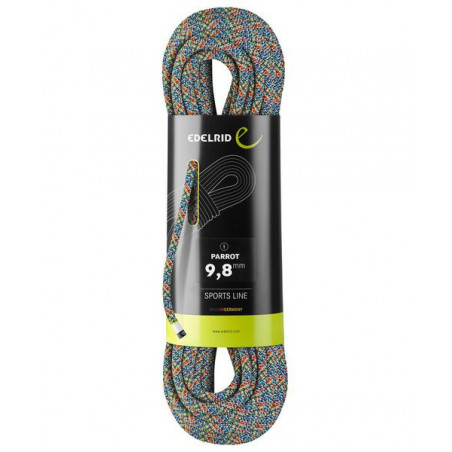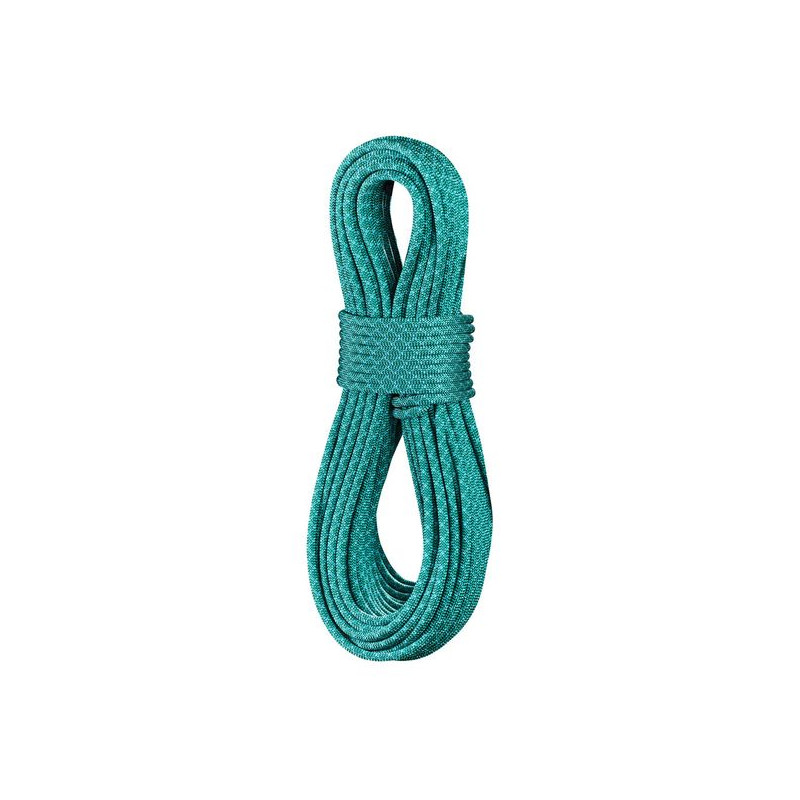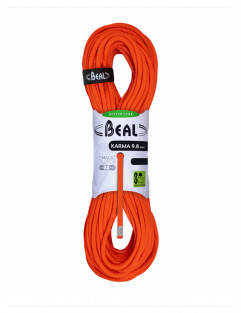New products
home
Arc'teryx -...Active filters
- Brand: Beal
activities
Beal - Karma - 9,8 mm - Solid Orange - Climbing Rope
Single Ropes
How to choose a climbing rope?
When going out to buy a climbing rope there are four main features to consider:
- What type of rope do you need?
- What diameter and length should the rope have?
- What features should the rope provide?
- What safety certification should the rope have?
All of these entirely depend on what you need the rope for? Are you going mountaineering? Indoor climbing? Multi-pitch? Etc.
Type of rope
There are three main differences in rope types designed for climbing: single, half, and twin ropes. Furthermore, a difference is made between static and dynamic ropes. In climbing, static ropes are only used when lowering an injured climber or ascending a rope. They are not designed, certified or tested to climb on because they stretch very little, that's what dynamic ropes are made for.
Single Ropes:
Most people tend to buy single ropes because they come in many different diameters and lengths, making them super versatile in their use. A single rope is a rope that is not to be used in combination with any other rope but by itself, like the name suggests. It's important to only use a rope as it was designed and tested to be used. Some single ropes can be used as twin or half rope too if this is specified by the manufacturer.
Single ropes are marked with a circled 1 on each end of the rope.
Single ropes, like previously mentioned are very versatile, and tend to be best for trad climbing, sport climbing, big-wall climbing and top roping.

Edelrid - Swift 8,9mm Single rope
Climbing rope diameter:
The rope diameter of a rope can vary quiet a bit and can make a huge difference on your climbing experience. Thinner ropes for example have the advantage of being lighter than thicker ropes but at the same time they are not as robust and need more skill when belaying with them. So depending on wether you are top roping in your local gym/crag or going for long distance multi-pitches you'll want something completely different.
Single ropes have more uses to them so the sizes vary a bit more:
up to 9.4 mm are ideal for long multi-pitches due to their reduced weight.
9.5 - 9.9 mm are good allrounders, they are light enough for a trip to the mountains and yet robust enough for repeated indoor use
10 mm and above are ideal to use in the gym, when figuring out the moves and making repeated falls
Rope features:
When comparing ropes these are some features to look for:
- Dry treatment is designed to reduce the ropes water absorption. While a rope is wet it becomes less resistant to falls, and if it should freeze, the rope becomes very hard to handle. Dry treatment is important should you plan on ice climbing for example.
- Middle Mark is a black dye mark half way of the rope to indicate that you have half of the length left.
- End warning marks are shown on some ropes when approaching the end of the rope
The choices are endless and difficult today so contact our Customer Service or send us a mail to help you choose the right product for your needs.
Shop online.........more time to climb.
Casper's Supports Your Summit






